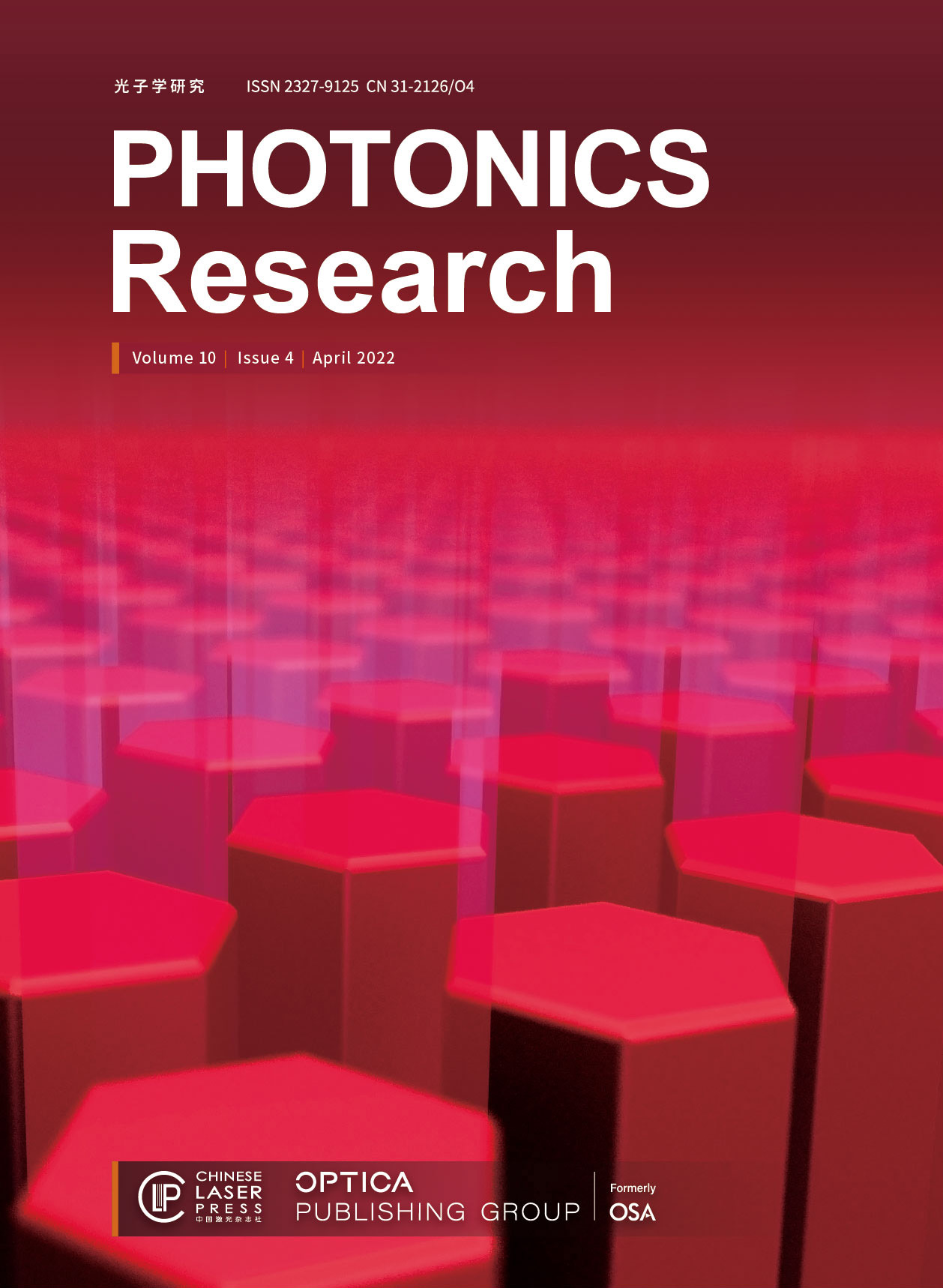Many applications, including optical multiplexing, switching, and detection, call for low-cost and broadband photonic devices with polarization-independent operation. While the silicon-on-insulator platform is well positioned to fulfill most of these requirements, its strong birefringence hinders the development of polarization-agnostic devices. Here we leverage the recently proposed bricked metamaterial topology to design, for the first time, to our knowledge, a polarization-independent
- Publication Date: Mar. 11, 2022
- Vol. 10, Issue 4, A57 (2022)
- Publication Date: Mar. 04, 2022
- Vol. 10, Issue 4, 843 (2022)
- Publication Date: Mar. 25, 2022
- Vol. 10, Issue 4, 1031 (2022)
- Publication Date: Mar. 25, 2022
- Vol. 10, Issue 4, 1011 (2022)
- Publication Date: Mar. 04, 2022
- Vol. 10, Issue 4, 870 (2022)
- Publication Date: Mar. 11, 2022
- Vol. 10, Issue 4, 932 (2022)
- Publication Date: Mar. 29, 2022
- Vol. 10, Issue 4, 1090 (2022)
- Publication Date: Mar. 29, 2022
- Vol. 10, Issue 4, 1134 (2022)
- Publication Date: Mar. 16, 2022
- Vol. 10, Issue 4, 965 (2022)
- Publication Date: Mar. 29, 2022
- Vol. 10, Issue 4, 1071 (2022)
- Publication Date: Mar. 11, 2022
- Vol. 10, Issue 4, 905 (2022)
- Publication Date: Mar. 16, 2022
- Vol. 10, Issue 4, 958 (2022)
- Publication Date: Mar. 11, 2022
- Vol. 10, Issue 4, 913 (2022)
- Publication Date: Mar. 25, 2022
- Vol. 10, Issue 4, 1039 (2022)
- Publication Date: Mar. 11, 2022
- Vol. 10, Issue 4, 886 (2022)
- Publication Date: Mar. 11, 2022
- Vol. 10, Issue 4, 896 (2022)
- Publication Date: Mar. 25, 2022
- Vol. 10, Issue 4, 980 (2022)
- Publication Date: Mar. 29, 2022
- Vol. 10, Issue 4, 1097 (2022)
- Publication Date: Mar. 25, 2022
- Vol. 10, Issue 4, 1063 (2022)
- Publication Date: Mar. 29, 2022
- Vol. 10, Issue 4, 1107 (2022)
- Publication Date: Mar. 04, 2022
- Vol. 10, Issue 4, 855 (2022)
- Publication Date: Mar. 25, 2022
- Vol. 10, Issue 4, 974 (2022)
- Publication Date: Mar. 25, 2022
- Vol. 10, Issue 4, 999 (2022)
- Publication Date: Mar. 11, 2022
- Vol. 10, Issue 4, 939 (2022)
- Publication Date: Mar. 25, 2022
- Vol. 10, Issue 4, 989 (2022)
- Publication Date: Mar. 25, 2022
- Vol. 10, Issue 4, 1022 (2022)
- Publication Date: Mar. 11, 2022
- Vol. 10, Issue 4, 877 (2022)
- Publication Date: Mar. 29, 2022
- Vol. 10, Issue 4, 1127 (2022)
- Publication Date: Mar. 16, 2022
- Vol. 10, Issue 4, 947 (2022)
- Publication Date: Mar. 29, 2022
- Vol. 10, Issue 4, 1117 (2022)
- Publication Date: Mar. 11, 2022
- Vol. 10, Issue 4, 922 (2022)
This publisher’s note corrects the authors’ order and affiliations in
- Publication Date: Mar. 16, 2022
- Vol. 10, Issue 4, 973 (2022)
About the Cover
This image represents an artistic rendering of a uniform array of GaN nanowire LEDs. The wires, grown using Molecular Beam Epitaxy, have an emitting region made using InGaN and are designed to emit red light.














